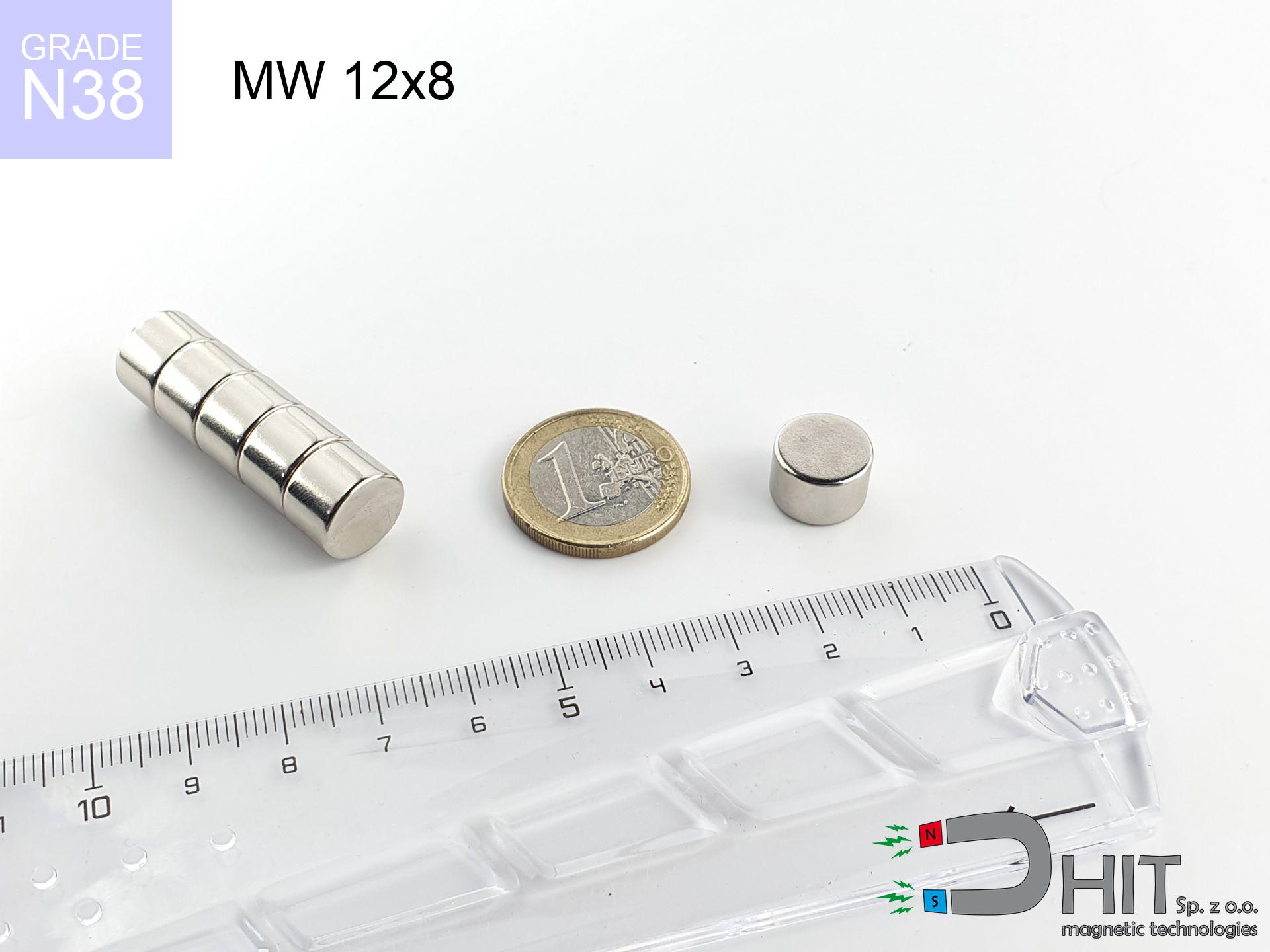UMP 67x28 [M8+M10] GW F120 Lina / N38 - search holder
search holder
catalog number 210381
GTIN: 5906301814009
diameter Ø
67
mm [±0,1 mm]
height
28
mm [±0,1 mm]
capacity ~
180.00 kg / 1765.20 N
max. temperature
≤ 80
°C
catalog number 210381
GTIN: 5906301814009
diameter Ø
67 mm [±0,1 mm]
height
28 mm [±0,1 mm]
capacity ~
180.00 kg / 1765.20 N
max. temperature
≤ 80 °C
150.00 ZŁ gross price (including VAT) / pcs +
121.95 ZŁ net price + 23% VAT / pcs
bulk discounts:
need more quantity?Want to talk about magnets?
Call us tel: +48 888 99 98 98 or write via form on the contact page. You can check the strength as well as the appearance of magnet in our power calculator power calculator
Orders placed by 2:00 PM will be shipped on the same business day.
Specification: search holder 67x28 [M8+M10] GW F120 Lina / N38
Magnetic properties of the material N38
Physical properties of sintered neodymium magnets Nd2Fe14B

Shopping tips
Advantages as well as disadvantages of neodymium magnets NdFeB.
In addition to immense strength, neodymium magnets have the following advantages:
- They do not lose power over time - after 10 years, their power decreases by only ~1% (theoretically),
- They are highly resistant to demagnetization by external magnetic sources,
- Thanks to the shiny finish and nickel, gold, or silver coating, they have an aesthetic appearance,
- They have exceptionally high magnetic induction on the surface of the magnet,
- By using an appropriate combination of materials, they can achieve high thermal resistance, allowing them to operate at temperatures up to 230°C and above...
- Due to the option of accurate forming or adaptation to individual needs – neodymium magnets can be produced in various forms and dimensions, which expands the range of their possible uses.
- Key role in advanced technologically fields – are utilized in computer drives, electric motors, medical devices or other modern machines.
Disadvantages of neodymium magnets:
- They are prone to breaking as they are fragile when subjected to a powerful impact. If the magnets are exposed to impacts, we recommend using magnets in a protective case. The steel housing in the form of a holder protects the magnet from impacts and also increases its overall strength,
- They lose power at high temperatures. Most neodymium magnets experience permanent loss of strength when heated above 80°C (depending on the form and height). However, we also offer special magnets with high temperature resistance, up to 230°C,
- Due to their susceptibility to corrosion in a humid environment, we suggest using waterproof magnets made of rubber, plastic, or other moisture-resistant materials when using them outdoors,
- Limited ability to create threads or complex shapes in the magnet - the use of a housing is recommended - magnetic holder
- Possible danger arising from small pieces of magnets pose a threat, when accidentally ingested, which becomes significant in the aspect of protecting young children. It's also worth noting that small elements of these products are able to be problematic in medical diagnosis after entering the body.
Safety Precautions
Neodymium magnetic are especially delicate, which leads to damage.
In the event of a collision between two neodymium magnets, it can result in them getting chipped. They are coated with a shiny nickel plating similar to steel, but they are not as hard. At the moment of collision between the magnets, tiny sharp metal fragments can be propelled in various directions at high speed. Eye protection is recommended.
Do not place neodymium magnets near a computer HDD, TV, and wallet.
Strong magnetic fields emitted by neodymium magnets can destroy magnetic storage media such as floppy disks, credit cards, magnetic ID cards, cassette tapes, video tapes, or other devices. They can also damage televisions, VCRs, computer monitors, and CRT displays. Avoid placing neodymium magnets in close proximity to electronic devices.
Dust and powder from neodymium magnets are flammable.
Avoid drilling or mechanical processing of neodymium magnets. Once crushed into fine powder or dust, this material becomes highly flammable.
Comparing neodymium magnets to ferrite magnets (found in speakers), they are 10 times stronger, and their power can shock you.
Familiarize yourself with our information to correctly handle these magnets and avoid significant swellings to your body and prevent damage to the magnets.
Magnets will attract to each other, so remember not to allow them to pinch together without control or place your fingers in their path.
In the case of holding a finger in the path of a neodymium magnet, in that situation, a cut or a fracture may occur.
Neodymium magnets should not be near people with pacemakers.
Neodymium magnets generate strong magnetic fields. As a result, they interfere with the operation of a pacemaker. This is because many of these devices are equipped with a function that deactivates the device in a magnetic field.
Keep neodymium magnets away from GPS and smartphones.
Magnetic fields can interfere with compasses and magnetometers used in aviation and maritime navigation, as well as internal compasses of smartphones and GPS devices. There are neodymium magnets in every smartphone, for example, in the microphone and speakers.
The magnet coating contains nickel, so be cautious if you have a nickel allergy.
Studies clearly indicate a small percentage of people who suffer from metal allergies such as nickel. An allergic reaction often manifests as skin redness and rash. If you have a nickel allergy, try wearing gloves or avoid direct contact with nickel-plated neodymium magnets.
It is essential to maintain neodymium magnets out of reach from children.
Remember that neodymium magnets are not toys. Be cautious and make sure no child plays with them. In the case of swallowing multiple magnets simultaneously, they can attract to each other through the intestinal walls. In the worst case scenario, this can lead to death.
Neodymium magnets can become demagnetized at high temperatures.
Although magnets have shown to retain their effectiveness up to 80°C or 175°F, this temperature may vary depending on the type of material, shape, and intended use of the magnet.
To show why neodymium magnets are so dangerous, read the article - How dangerous are very strong neodymium magnets?.

![UMP 67x28 [M8+M10] GW F120 Lina / N38 - search holder UMP 67x28 [M8+M10] GW F120 Lina / N38 - search holder](https://cdn3.dhit.pl/graphics/products/ump-67x28-m8+m10-gw-f-120+-lina-xiw.jpg)

![magnetic separator 32x150 [2xM8] / N52 magnetic separator 32x150 [2xM8] / N52](https://cdn3.dhit.pl/graphics/products/sm-32x150-2xm8-xuc.jpg)



